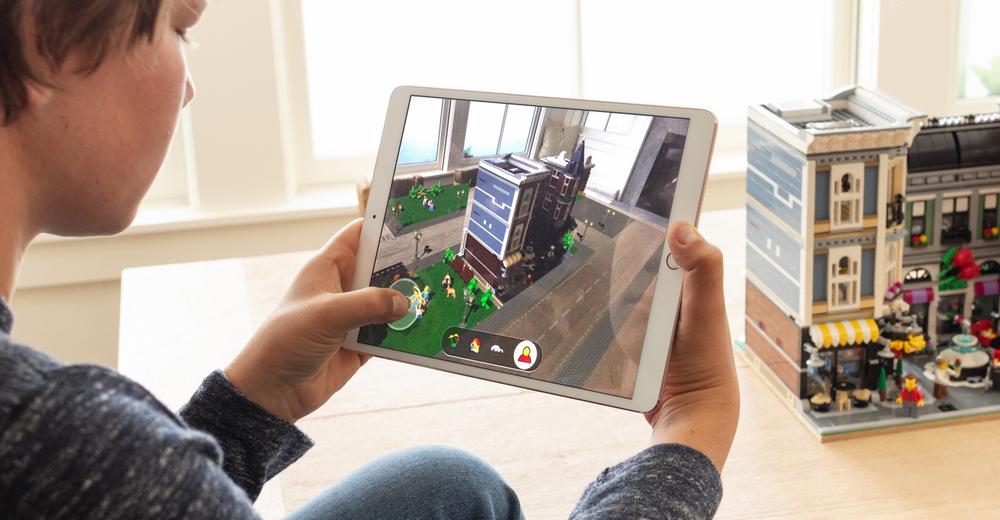Augmented reality is Apple’s next revolution

If recent rumors about this summer’s iOS 11 announcement and this fall’s iPhone hardware refresh are to be believed, Apple is going to be betting big on augmented reality. From iPhones without bezels to new Maps features that make use of the smartphone camera, theories abound about what Apple’s AR solution might ultimately look like. Customers are excited about what Apple might introduce, but completely at a loss as to what this new feature might actually feel like to use.
But regardless of what the eventual features look like, the trend of augmented reality is a solid and promising one. And especially if a technology giant like Apple is willing to throw its hat into the AR ring, brands have every reason to follow their lead and play around with this technology.
What could APIs for AR look like?
If the theoretical augmented reality features for end users are indeed included in iOS 11, there’s a chance Apple will introduce native APIs for third-party iOS app developers to use in their own apps. There’s certainly no guarantee, but it’s worth imagining what might be available and how these developer tools might come to life.
Apple already offers a suite of camera-specific APIs that allow developers’ apps to recognize, annotate, and otherwise manipulate objects recognized by the iPhone camera. Apps like Snapchat use this to great effect, adding dog ears and sunglasses to users’ recognized faces. Apple could dramatically expand these capabilities to include a wider selection of real-world recognized objects, building upon its years of work in the image recognition space for its Camera app.
Developers could then use these APIs to power all-new in-app functions, adding annotations and other information to objects recognized by the camera, like buildings, monuments, street signs, storefronts, and more. Coupled with location services, these features could grow into meaningful way-finding and travel assistance experiences.
Augmented reality could power meaningful assistive features for users exploring a new city or even navigating their local mall.
Beyond that, as Apple is wont to do, they will likely build a first-party app that showcases some of these capabilities to give developers inspiration—rumors suggest they might be built directly into the system Maps application. Expanding on the Maps SDK introduced in iOS 10, Apple might open this library of augmented reality content to third parties, allowing developers to submit information about their businesses, locations, or other real-world objects to be included and offered to users in Apple’s first-party augmented experiences.
How will customers use AR in real life?
Augmented reality, somewhat unlike virtual reality, is an extension of the habits and experiences that many users are already familiar with. This is perhaps what compels Apple—and its CEO Tim Cook in several recent interviews—to the idea. The ways in which people query smartphone apps for helpful data today—to navigate somewhere, to research quick information, to find something interesting to do nearby—are in essence “augmentations” to reality already.
The ways in which people query smartphone apps for helpful data today—to navigate somewhere, to research quick information, to find something interesting to do nearby—are in essence “augmentations” to reality already.
For brands, there’s an enormous opportunity to capture users’ existing behaviors and become part of the conversation. As users are searching for information, as they evaluate products in a store or try to find helpful tips nearby, augmented reality presents an opportunity for developers and their apps to insert themselves into users’ lives in an unobtrusive and welcome way.
If Apple is successful in making augmented reality a staple of smartphone users’ lives, the technology will become an essential new avenue to connect with users in a new context.
AR can become positioned as one of those rare places where the priorities of a user and the brand trying to reach them overlap. Customers want information about your business, your product, or your services in the context they’re in at this exact moment. As they are considering what to do or buy next, brands have an opportunity to provide welcome assistance within the customer’s AR experience. If Apple is successful in making augmented reality a staple of smartphone users’ lives, the technology will become an essential new avenue to connect with users in a new context. If not, then perhaps Google Glass will earn a new comrade in the AR graveyard.